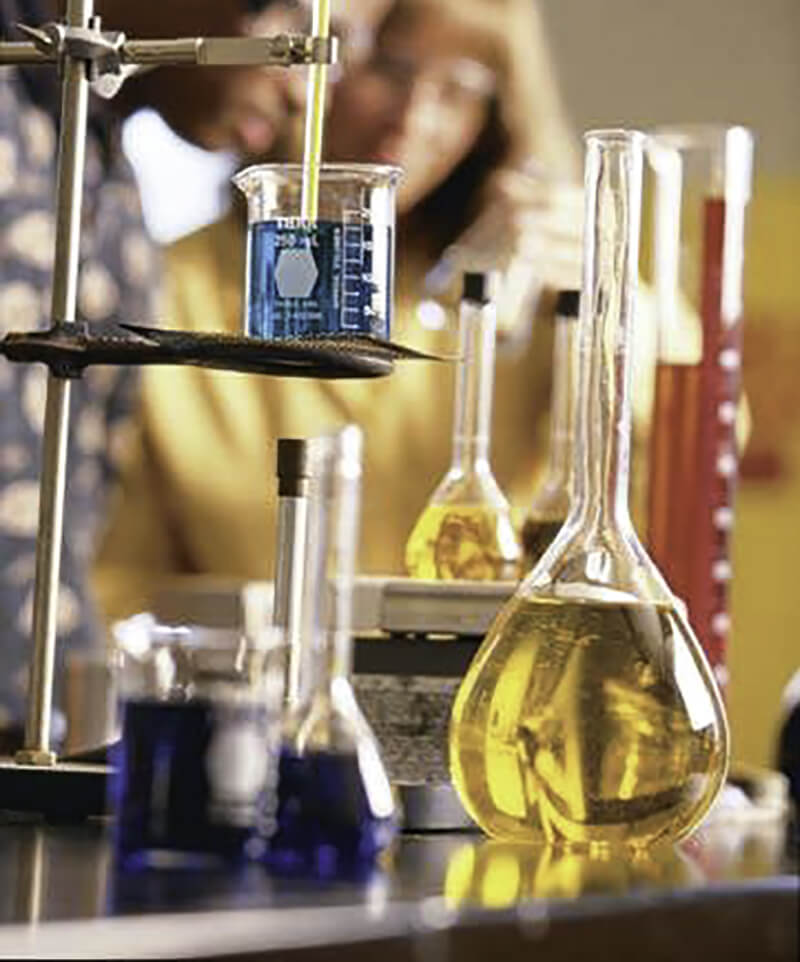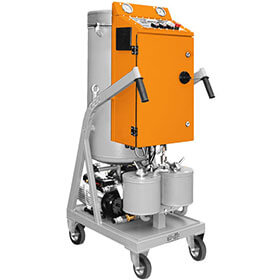Transformer oil is not only a lubricant that protects the active part of high voltage equipment from overheating, it is also an arc suppression medium and protects transformer from penetrating moisture. Therefore, the life of transformer equipment directly depends on the quality of a dielectric used.
To avoid undesirable consequences of a contaminated dielectric, it is necessary to carry out its diagnostics. For this purpose, the samples are taken of transformer oil, that are analyzed to establish the degree of contamination and possible methods for cleaning and regeneration.
Transformer oil sampling
Transformer oil sampling and its further analysis is an important part of maintenance, resulting in proper operation of power equipment. This procedure has some difficulties and must pass in accordance with the established requirements:
- the sampling vessel must be made from the material that can protect the insulating liquid from the influence of external factors. This is important for diagnosing the gas content;
- good weather conditions. This factor can also affect the sample, if the storage vessel is not sufficiently sealed;
- the oil must be warm. It is better to take a sample during equipment operation or not later than three hours after its was switch off. Compliance with this condition is particularly important for the correct evaluation of the moisture content in a product;
- before transformer oil sampling, first drain at least 1 or 2 liters of oil to wash out the debris and rinse the sample tap from possible contaminants;
- the material for sampling equipment, should not adsorb the particles contained in the liquid or enter into any chemical reactions with the oil. Also it is recommended to use an oil resistance rubber bung or stainless-steel tube;
- the vessel in which the sample is taken must be clean and dry. It should have the filling capacity not less than 95% of the total volume. The lid should be hermetically sealed.
- the corresponding marking on the sample. The label should contain the following information:
- place of operation and type of equipment;
- operating voltage;
- operating power of transformer;
- factory number;
- grade of oil taken for analysis;
- purpose and time of sampling conducted;
- temperature of environment and oil;
- name of the employee who took the sample;
- name of the analysis.
In general, syringes made of glass are used for transformer oil sampling. Do not use plastic equipment. Before the procedure, the syringe is rinsed several times, and then – sealed.
Methods of diagnostics and analysis of transformer oil
The next important stage of maintenance of power equipment is analyzing the sample of insulating liquid. The type of analysis depends on the condition of oil product, was it used or not. Fresh transformer oil or regenerated oil just filled into the equipment is checked by the following methods:
- breakdown voltage test. This includes checking the presence of moisture in oil, calculating the breakdown voltage and visual analysis of the sample;
- Oil screen test. It determines the acid number, the content of soluble acids, the flash point and the color of the insulating liquid;
- Complete analysis. This oil diagnosis includes all tests from the previous method, and the dielectric loss tangent, the presence of sodium, moisture and mechanical impurities.
One of the methods for testing transformer oil is a chromatographic analysis. As a rule, it uses a special equipment. Its main task is to detect the defects and damages of structural elements of solid insulation. But it does not give any definite information about the presence of contaminants in the oil itself. Nevertheless, the use of chromatographic analysis helps to prevent possible breakdowns of equipment, since it helps to detect damage that can not be practically diagnosed by traditional methods.
The equipment for chromatographic analysis may include several or one chromatograph – depending on the amount of transformer oil and the necessary degree of analysis. Also, the complex of chromatographic equipment includes auxiliary devices and consumables.
Oil screen test l is carried out partly visually and partly in the laboratory. Visual inspection checks the presence of impurities and water in the insulating liquid. The diagnosed parameters are the breakdown voltage, acid number, flash point and the reaction of aqueous solution.
A complete analysis uses the values obtained at oil screen test. If the latter test results do not comply with the standards, a complete analysis investigates the petroleum product further.
Heavy aging of oil inside the electrical equipment causes destructive processes in the active parts of transformer and a destruction of solid insulation. Therefore, a full analysis allows to assess the methods for deep cleaning of oil to restore its basic electrical properties and cooling capabilities.
GlobeCore equipment for transformer oil purification and degassing
If the transformer oil sampling and analysis reveals the presence of gases, water, acid compounds or mechanical impurities in the composition of an insulating liquid, its characteristics must be restored. GlobeCore developed a number of oil plants that provide cleaning and degassing of industrial oils, including transformer oils.
As an example of GlobeCore degassing and treatment equipment we will consider an oil station CMM-0,6. This equipment vacuum treats and purifies insulating liquid, keeping the useful hydrocarbons and removing mechanical impurities and gases. The unit operates in oil pumping and heating modes.
The equipment is easy to operate and, thanks to its compactness and mobility, it can be transported directly to the transformer equipment.
GlobeCore manufactures equipment for purification and degassing of transformer oils, also to individual orders. At customer requests the oil plants are equipped with additional sensors, filter elements, etc. For details please contact the managers of our company.


